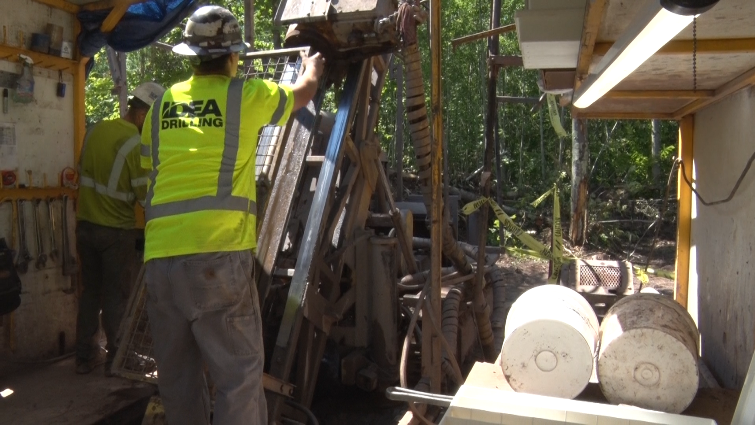Exploratory drilling rehabilitation efforts underway

GOGEBIC COUNTY– Back in February ABC10’s Lauren Lee gave us an inside look at the exploratory drilling conducted in the Porcupine Mountains and nearby land. This week Highland Copper Company took media out to the site once more- but this trip was full of apologies and explanation.
Highland Copper Company employees along with geologists, engineers, and other specialists gathered near the south edge entrance sign to the Porcupine Mountains. As ABC10 highlighted in February Highland Copper Company followed strict guidelines set by DNR while on park grounds- a major rule was to stop the project when temperatures started dropping, ensuring the ground was frozen to minimize impact.
According to DNR and Highland Copper no damage was done while drilling inside the park, the problems occurred along the drill area by County Road 519. Highland Copper Company admitted they chose to continue work outside the park on the Copper wood project.
“We are here today to demonstrate yes, one makes mistakes but one is willing to repair them properly and we will go to the full extent of rehabilitation required by the DEQ,” Executive Vice President of Project Development Carlos Bertoni said. “ We thought it would be safer for us to use the snowmobile trail for tracked vehicles, the problem with tracked vehicles is they churn the ground a lot, hence all the mud they created by driving up and down the snowmobile trail. So in a sense we avoided traffic in the road but we created a problem here, so avoiding a safety issue we created a problem here.”
Around 233 feet of land on either side of county road 519 is what’s known as a “right of way” property or also called a buffer zone. Ten holes were to be drilled along this stretch of land and although only six were completed- the company still didn’t leave fast enough, causing erosion from tracked vehicles on the snowmobile trails.
Pink flagged areas represent wetlands, overall 1.9 acres of wetland patches were affected.
What defines a wetland?
“We are just not trying to make excuses here, it’s a complex technical definition, what is wetland,” Bertoni said. We did not know, this had not been mapped essentially and we did not interrupt this as wetland so essentially we learned in the process.”
“Vegetation, hydrology so you know where’s the water table, and the soil types,” Highland Copper environmental engineer Tom Rupaul said. “So you have to pass all three of those tests and the army corps of engineer has a manual they published quite a number of years ago because this was poorly defined even 20 years ago.”
All efforts for rehabilitation are being conducted by specialists to ensure no trace is left behind. Highland Copper reassured that all plants used in the restoration process are native species. Currently the four holes left incomplete will be filled in concrete come winter time.
“So we intend to go back to the DEQ and obtain another license to drill inside section five of next winter and complete that program,” Bertoni said. “What we have been told by DNR is that they were happy with the way we drilled when we were inside the park, we left the park at the right time. We just stayed too long here drilling along the right of way.”
Until the snowfall Highland Copper is continuing exploratory drilling on company property, also known as section six. The minerals taken from the earth are 1.3 billion years old.
